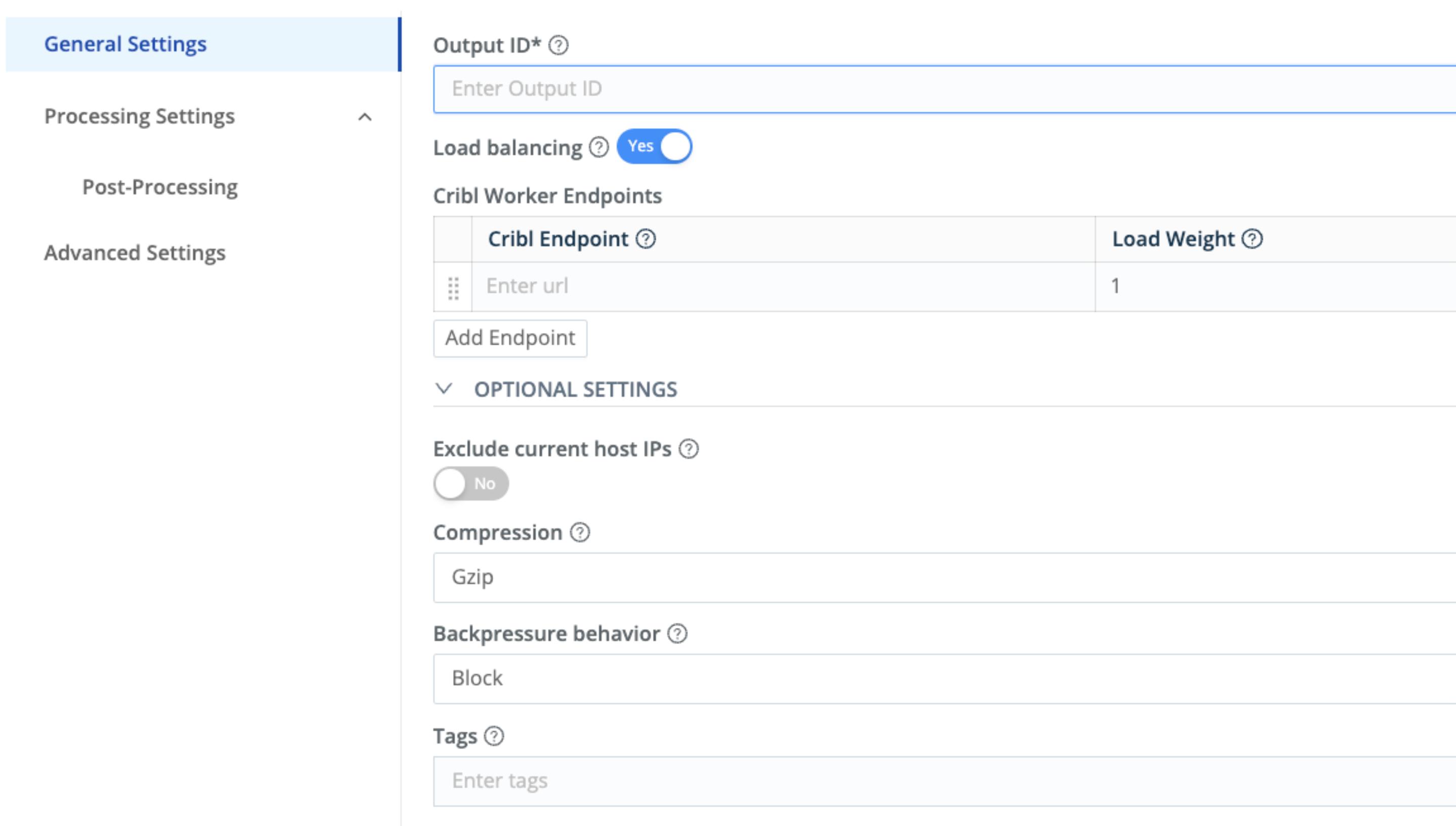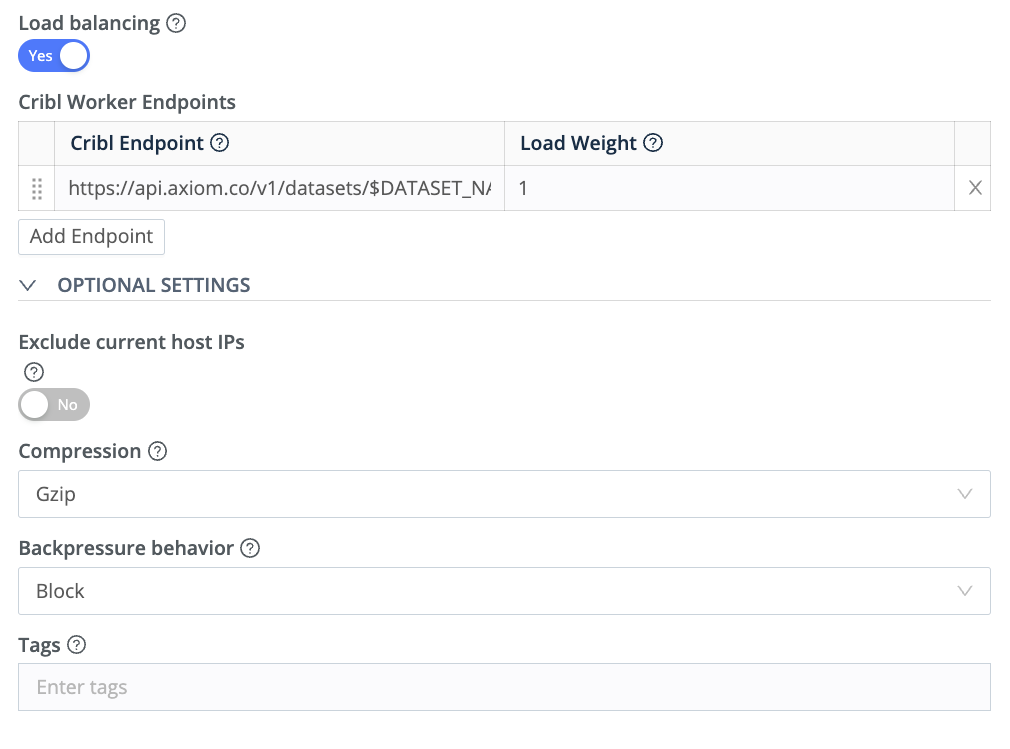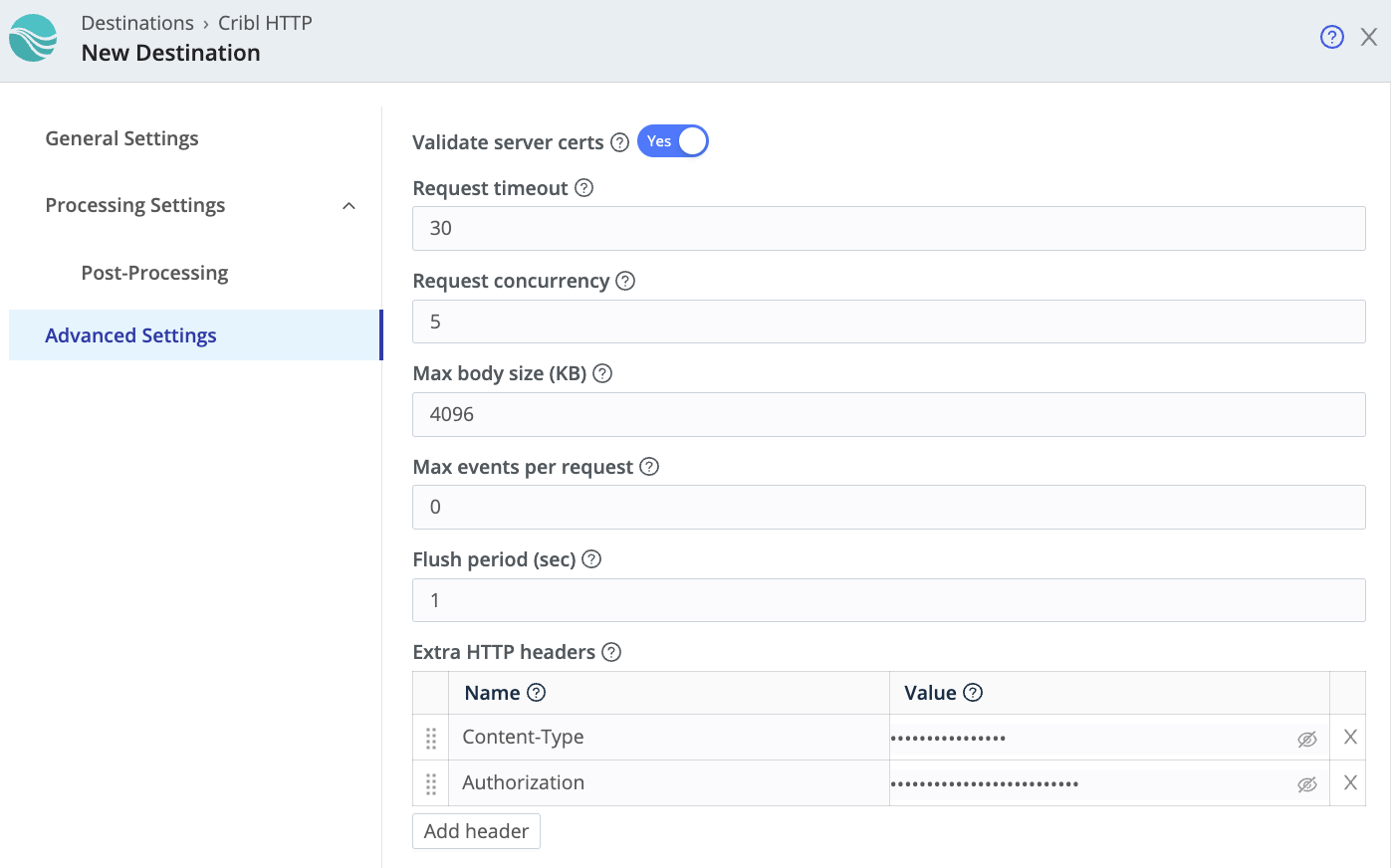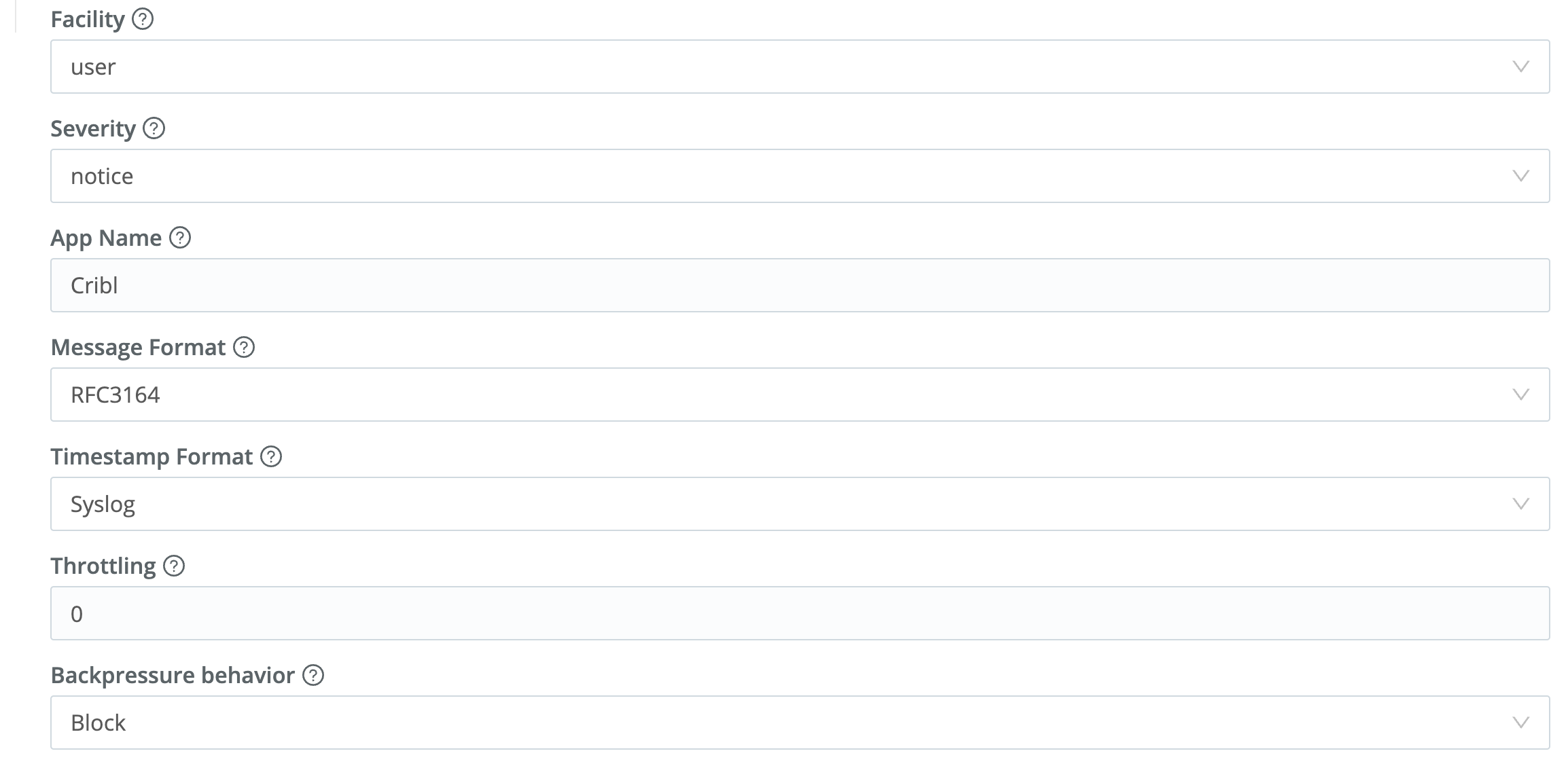Prerequisites
- Create an Axiom account.
- Create a dataset in Axiom where you send your data.
- Create an API token in Axiom with permissions to ingest data to the dataset you have created.
Set up log forwarding from Cribl to Axiom using the HTTP destination
Below are the steps to set up and send logs from Cribl to Axiom using the HTTP destination:- Create a new HTTP destination in Cribl LogStream:
+ Add New to create a new destination.

Cribl LogStream
- Configure the destination:
- Name: Choose a name for the destination.
-
Endpoint URL: The URL of your Axiom log ingest endpoint
https://AXIOM_DOMAIN/v1/ingest/DATASET_NAME.ReplaceAXIOM_DOMAINwith the base domain of your edge deployment. For more information, see Edge deployments.ReplaceDATASET_NAMEwith the name of the Axiom dataset where you send your data. -
Method: Choose
POST. - Event Breaker: Set this to One Event Per Request or CRLF (Carriage Return Line Feed), depending on how you want to separate events.

Cribl LogStream destination
- Headers:
-
Content-Type: Set this to
application/json. -
Authorization: Set this to
Bearer API_TOKEN.ReplaceAPI_TOKENwith the Axiom API token you have generated. For added security, store the API token in an environment variable.

Cribl LogStream destination headers
- Body:
{{_raw}}. This forwards the raw log event to Axiom.
- Save and enable the destination:
Set up log forwarding from Cribl to Axiom using the Syslog destination
Create Syslog endpoint
- Click Settings > Endpoints.
- Click New endpoint.
- Click .
- Name the endpoint.
- Select the dataset where you want to send data.
- Copy the URL displayed for the newly created endpoint. This is the target URL where you send the data.
Configure destination in Cribl
- Create a new Syslog destination in Cribl LogStream:
+ Add New to create a new destination.
- Configure the destination:
- Name: Choose a name and output ID for the destination.
- Protocol: Choose the protocol for the Syslog messages. Select the TCP protocol.
-
Destination Address: Input the address of the Axiom endpoint to which you want to send logs. This address is generated from your Syslog endpoint in Axiom and follows this format:
tcp+tls://qsfgsfhjsfkbx9.syslog.axiom.co:6514. -
Destination Port: Enter the port number on which the Axiom endpoint is listening for Syslog messages which is
6514 -
Format: Choose the Syslog message format.
RFC3164is a common format and is generally recommended. - Facility: Choose the facility code to use in the Syslog messages. The facility code represents the type of process that’s generating the Syslog messages.
- Severity: Choose the severity level to use in the Syslog messages. The severity level represents the importance of the Syslog messages.

Cribl LogStream destination configuration
- Configure the Message:
- Timestamp Format: Choose the timestamp format to use in the Syslog messages.
- Application Name Field: Enter the name of the field to use as the app name in the Syslog messages.
-
Message Field: Enter the name of the field to use as the message in the Syslog messages. Typically, this would be
_raw. - Throttling: Enter the throttling value. Throttling is a mechanism to control the data flow rate from the source (Cribl) to the destination (in this case, an Axiom Syslog Endpoint).

Configure the Syslog message
- Save and enable the destination